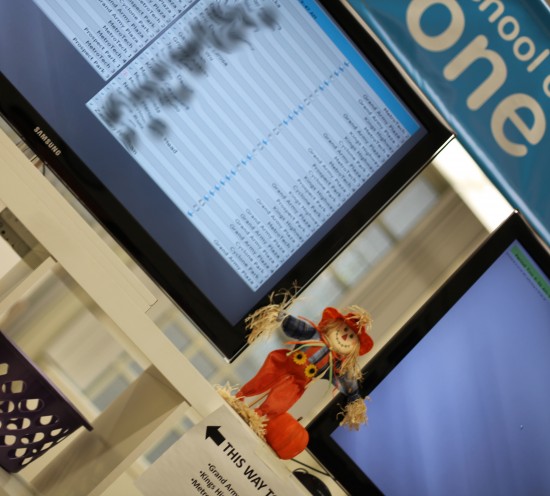I made a 24 hour visit to NYC to check out two of the schools in their iZone project. It’s worth reading a little more about the concept at their site.
New York City has designed the iZone to free schools from the compliance-oriented culture that has inhibited real innovation in our nation’s schools. Schools within the iZone are provided the resources and support to pioneer new models that transform what schools look like, personalizing instruction to the needs of each individual student, and dramatically improving student achievement.
.
The following comments are based on about two hours at each school during which we toured a few classrooms and got a variety of people related to the school telling us various things. Add my own biases and other personality issues and you’ve got a fairly superficial view of things but it’s probably more than you had before. I freely admit that this is surface level and probably more reflective of my own opinions than any sort of objective reality.
School of One
To organize this type of learning, each student receives a unique daily schedule based on his or her academic strengths and needs. As a result, students within the same school or even the same classroom can receive profoundly different instruction as each student’s schedule is tailored to the skills they need and the ways they best learn. Teachers acquire data about student achievement each day and then adapt their live instructional lessons accordingly.
My one sentence description: A math curriculum that tries to use software and algorithms to create daily differentiated schedules and experiences based on student performance on task based activities.
That’s a convoluted sentence, no doubt. To make it more plain, they have students doing a fair amount of work within a LMS type system where they can track “mastery” of concepts through multiple choice quizzes. They take those data, combine it with self reporting on preferred learning styles and start to build schedules for students that take those things into account.
What I liked–
It makes sense to-
- change instruction for individuals based on demonstrated results and preference.
- use computers to help students efficiently memorize basic content and master basic skills.
- offload some of the work of differentiation onto computers.
- offload a chunk of low level grading to computers where the data can be tracked and broken down in more useful ways that actually change how and what students are taught.
Expanded Notes
The learning is done in one large long room- think giant shoe box shape. I believe they had to tear down walls to create it. The rationale is that having one giant room will result in teachers holding each other accountable and that it saves time (extends the school year was the way it was stated) by eliminating time lost by moving to different rooms. I’m not sure how that works as it seems like the students would still have to move, although the distance would be less.

The focal point on entering the room is a large monitor displaying student names indicating where that student should be (see image above- names blurred out of paranoia). There are various rough sections with signs. You have students involved in direct instruction, doing 1:1 online tutoring, participating in various online activities with a guide circulating to help if needed.
It is fairly loud due to the fact that there are numerous teacher led direct instruction sessions going on at once. Teacher instruction looked traditional in form and manner while we were present. “Class” sizes were smaller than the 30 or so you’d see in most classrooms (10 on average?) but some seemed to be in the high teens if not twenties. Whiteboards were in use and seemed to act as impromptu walls in many cases.
It seems like it’d be hard for students to make connections to teachers in this situation because of the way kids move from teacher to teacher. This was brought up as well, citing the importance of the teacher-student relationship and learning. The reply was essentially- “Students don’t get stuck with bad teachers all year either.” I’m not a fan of that reply.
Another aspect which had me thinking some was that teachers had core lessons they taught. Like, I might be the “multiplying fractions” guy or the “area of quadrilaterals” guy. In order to deal with the way students shift, teachers needed to cut down on prep time so they became “experts” in certain specific lessons. There are some positive aspects to teaching the same content to a bunch of different students, multiple times in a day/week/year if you are breaking it down and really learning from it as a teacher. I, as an individual, might also go crazy. I like some variety and feeling of linear progression in how I teach students. I’m not sure I’d get that in this system. It’s hard to tell.
They are trying new things. They are new things that seem to be custom made for the kind of multiple choice tests that are currently in vogue. There are pieces that are worth thinking about but I’m not sure how this system, as a whole, would fare under different testing conditions.
Anyway, that ought to break up the parade of #ds106 posts. I’ll save the second school for another post, as I’m rapidly approaching 900 words here.
